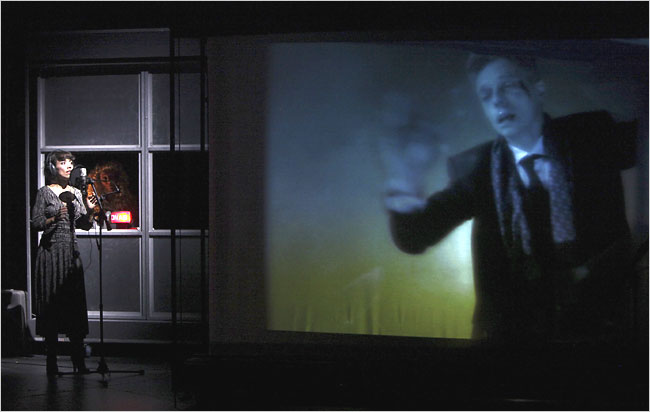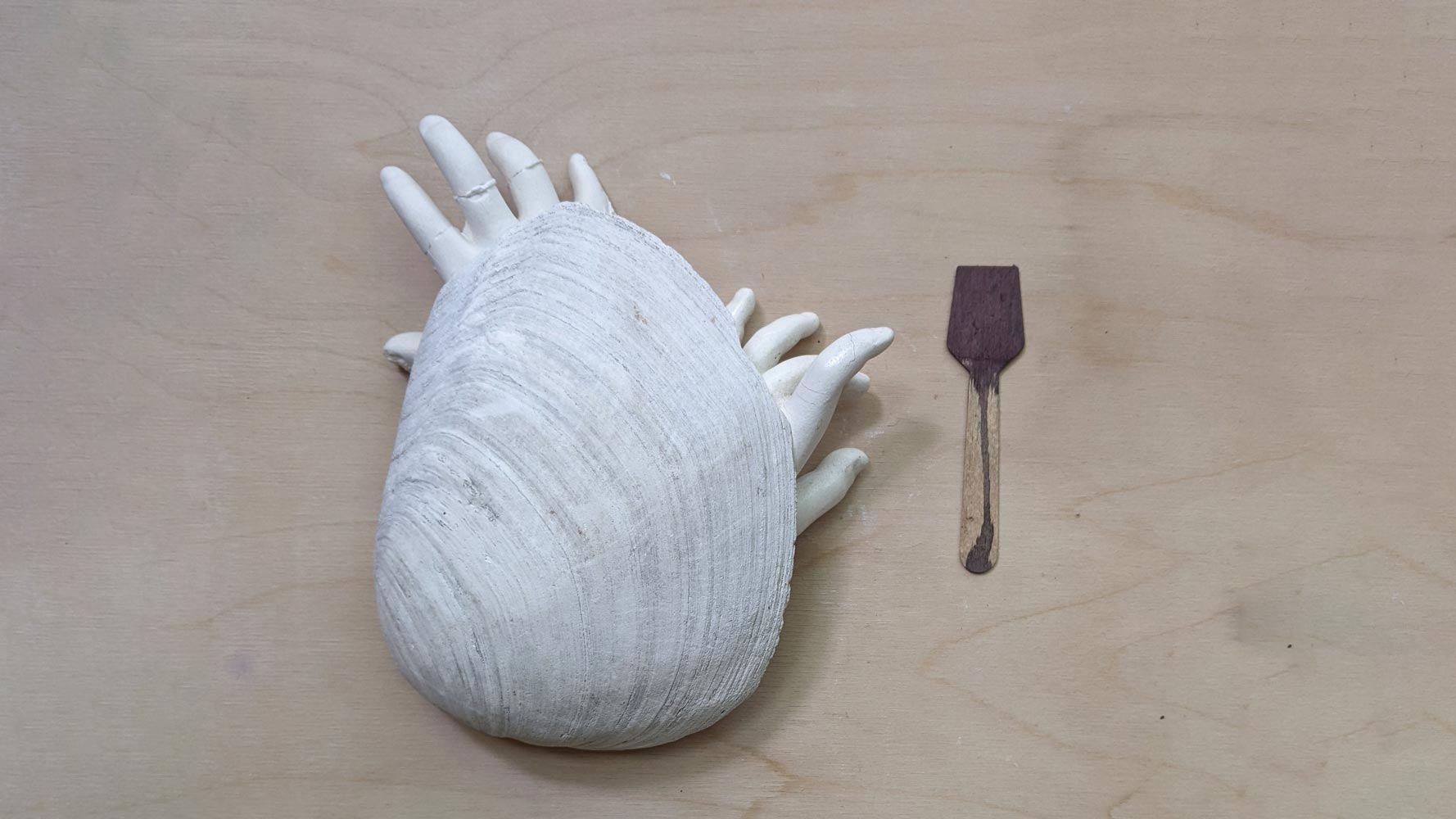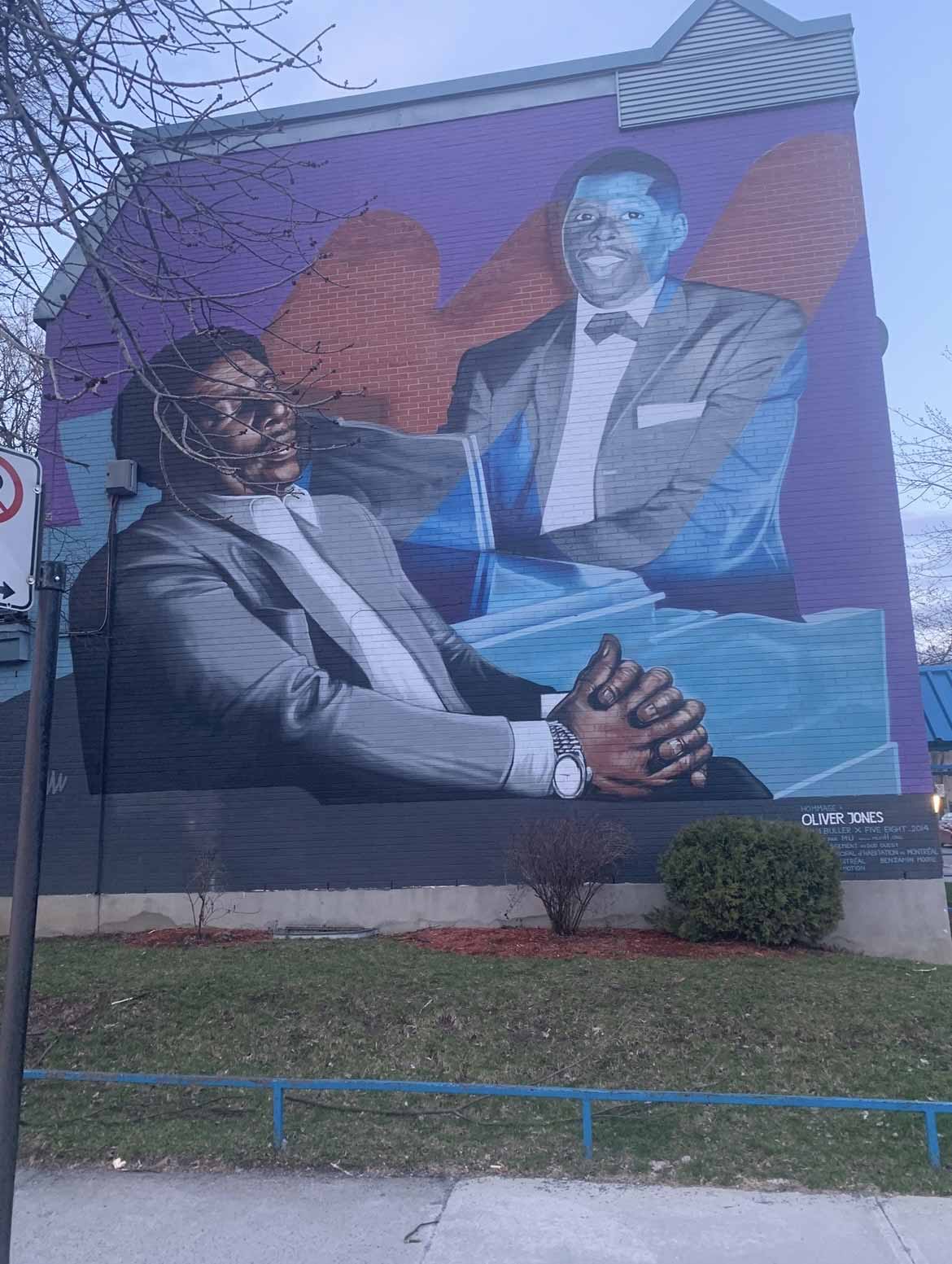
Lipsynch by Robert Lepage
Quebec’s Robert Lepage and his company, Ex Machina, collaborated with Theatre Sans Frontieres to bring Lipsynch, to The Brooklyn Academy of Music’s 2009 Next Wave Festival (Oct 3-11). It would be an understatement to state that this production transported its audience, with breathtaking images, into the magical realm of nine intertwined lives through the window of his vertical space of theatre and opera in a marathon, nine-hour production.
Lepage began his exploration of the human voice by literally flying us into his universe. On his magic carpet Lufthansa airplane, from Frankfurt to Montreal, are Ada, an opera singer, (Rebecca Blankenship) rehearsing in first class while a crying baby is in coach, held in the arms of her deceased mother, a Nicaraguan prostitute named Lupe (Nuria Garcia). Lepage uses a surgeon’s scalpel to juxtapose these two lives and all that follow. One is left with the visual metaphor of the plane as a birth canal.
We are introduced to a number of intersecting lives: Marie (Frederike Bedard), who while attempting to understand what her deceased father had to say on old 8mm films, hires a lip-reader to assist her; Thomas (Hans Piesbergen), the German neurologist, whose fascination with the human brain destroys and leaves a female patient speechless; a sex worker (Sara Kemp) who struggles with issues of incest; Ada, who makes the decision to adopt Lupe’s baby whom she names Jeremy (Rick Miller), whose journey is to make a film, loosely based on his biological mother’s life.
My first introduction to Robert Lepage’s visionary work was the Metropolitan Opera’s production of La Damnation de Faust, currently in repertoire at the Met. His inventive use of technology, without sacrificing the artistic integrity of the opera, enthralled me. It should be noted that Mr. Lepage has been commissioned for the Metropolitan Opera’s 2012 Wagnerian Ring Cycle, to be conducted by Music Director, James Levine. So anticipated is this Ring Cycle that audiences are urged to become Diamond Ring ($25,000) and Golden Ring ($10,000) pre-subscribers to secure priority seating.
In Lipsynch, his set pieces, which break apart and reconfigure from an airplane in to the London tube, for example, are not a distraction to the story line, instead they engage and focus our attention.
Lipsynch is layered with multiple languages. As an audience member, if we do not understand German or French, we must make the decision to focus our attention somewhere between the subtitles and the actors. But if we do not speak Spanish, as there are no subtitles here, does the physicality and emotionality of the actors justifies this? Or does he want to scramble our brains and challenge us?
Remembering and forgetting -some haunting images: an elongated goodbye between Ada and Jeremy as the train pulls out of the station. The last act, when Lupe is reduced to a sexual commodity and wraps her hands around her transparently exposed breasts. And then there is Lupe’s lifeless body cradled in Jeremy’s arms.
One of the central themes of Lipsynch revolves around the sex industry and those who are exploited by being seduced with false promises only for the profit of sex traffickers: Lupe’s story is sadly commonplace. Currently on view in New York, is JOURNEY, an experiential installation designed by well known artists such as Anish Kapoor, Emma Thompson, who worked with and assisted Elena in retelling her story in the Resurrection room, and Sam Roddick, who designed a shockingly filthy (and smelly) room with a pulsating bed and a mirror that is inscribed in lipstick with the words, Help Me. The central figure is Elena, a Moldavian woman, who was tricked and sold for 500 British pounds, to a sex ring in London. Her story and that of Victoria, Tina, Isabella, Yolanda, Saphire and Ola is recorded and honored with painful first-hand descriptions of humiliation, sexual brutality and submission. It is important to note, and this ties directly into the multiplicity of language in Lipsynch, that half of these women spoke poor or very little English. How are they to speak and who will listen?
Ex Machina engages its actors through the improvisational process of building a theatre piece, stuck by stuck, from clinical research to personal stories, in powerful workshops that are reminiscent of the late choreographic genius of Pina Bausch, as well as other theatre luminaries such as Anne Bogart, Robert Wilson, Philip Glass, Andrei Serban, Ariane Mnouchkine and Peter Brook. As a creative tool, this process is a force that both stimulates and gives authenticity to each sequence, actor and Act.
Robert Lepage defined it best, “I often compare our evolving artistic process to the image of a tree. The audience only sees the trunk, bark, branches, and leaves. But the artist should be preoccupied by the growth happening underground, in that unseen network of roots digging erratically yet so expertly that it can hold, sustain and nurture the whole tree…we often confuse voice, speech, and language, but those are indeed three very distinct and totally different things. Lipsynch is about the signification of all three and their interaction in modern human expression.”
I am looking forward to 2012 and being in the audience for the Met’s Ring Cycle. The only question is, can I afford it?







